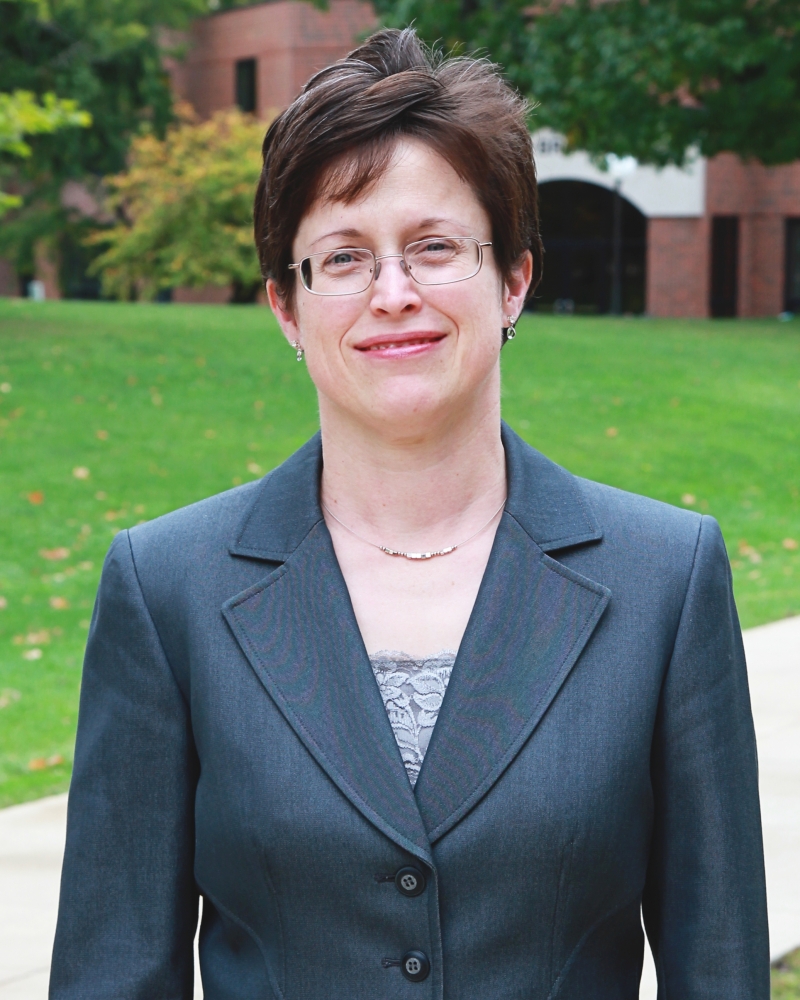The Journal of Chemical Education published an article about a classroom experiment written by Dr. Ruth Nalliah, professor of chemistry, and the Huntington University Chemistry Department. It also was selected as the cover story for the Oct. 13, 2015: Vol. 92, Iss. 10 of the publication.
Nalliah’s article is entitled, “Oxone/Fe2+ Degradation of Food Dyes: Demonstration of Catalyst-Like Behavior and Kinetic Separation of Color.” In the article, she describes an easily-prepared classroom demonstration of the decomposition of dyes in food coloring mixtures. It provides an opportunity to discuss catalysis, kinetics and eco-friendly methods for decomposition of pollutants, such as pharmaceuticals, that persist in wastewater.
“An easy way to test whether a substance might do well at degrading pharmaceutical pollutants is to see whether it degrades food coloring molecules,” Nalliah said. “So one summer day, I decided to go into the lab and quickly test how well oxone (with iron as a catalyst) works at degrading food coloring. I clearly remember adding a little iron compound (as a catalyst) and oxone to a flask of green food coloring solution and immediately the solution began to turn yellow (which means that the oxone was degrading the blue dye in the mixture). After a while, it degraded the yellow dye, too. So I tested the reaction with other food coloring mixtures and it degraded other dyes as well, some faster than others.”
The specific issue of the Journal of Chemical Education celebrates National Chemistry Week, held Oct. 18-24, 2015, which is an annual event that unites individuals, businesses and schools to communicate the value of chemistry in everyday life. This year’s theme is, “Chemistry Colors Our World.” The cover of the publication shows photos of different food color dye mixtures, taken by Nalliah throughout her experiment to show the color changes as the dyes reacted with oxone.
“I thought this would make a great classroom demonstration to publish, and since the color changes were so pronounced, I started taking photographs to submit as cover art for the Journal of Chemical Education,” Nalliah said. “My husband, Paul Nalliah, systems administrator at HU, gave great advice on how to take some good photos of this, and I’ve always enjoyed working with the chemistry of color. This was the most fun article I’ve ever published.”
The article is due in part to Huntington University chemistry student Audrey Ackley, whose freshman chemistry applications paper on oxone sparked investigations that led to the work. Nalliah also received helpful suggestions from Dr. William Bordeaux, professor emeritus of chemistry; Dr. Gerald Smith, professor emeritus of chemistry and physics; and Dr. Timothy Troyer, assistant professor of chemistry, in writing the article.
“With the help of the Emeriti Fellows Research Fund and Artistic Creation Fund at Huntington University, we continue to do research in freshman chemistry on substances or combinations of substances which could safely and efficiently degrade excreted pharmaceuticals entering the water supply,” Nalliah said. “We hope that the publication of this demonstration will help educators spread the word about our increasing pharmaceutical footprint and possible solutions to the problem.”
Huntington University is a comprehensive Christian college of the liberal arts offering graduate and undergraduate programs in more than 70 academic concentrations. U.S. News & World Report ranks Huntington among the best colleges in the Midwest, and Forbes.com has listed the university as one of America’s Best Colleges. Additionally, Princeton Review has named the institution a “Best Midwestern College.” Founded in 1897 by the Church of the United Brethren in Christ, Huntington University is located on a contemporary, lakeside campus in northeast Indiana. The university is a member of the Council for Christian Colleges and Universities (CCCU).


You must be logged in to post a comment.